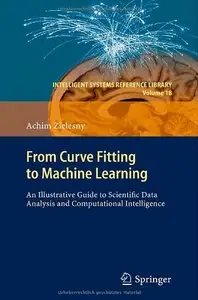Achim Zielesny, "From Curve Fitting to Machine Learning: An Illustrative Guide to Scientific Data Analysis and Computational Intelligence "
Sp,.,.er | 2011 | ISBN: 3642212794 | 484 pages | PDF | 12,1 MB
Sp,.,.er | 2011 | ISBN: 3642212794 | 484 pages | PDF | 12,1 MB
The analysis of experimental data is at heart of science from its beginnings.
But it was the advent of digital computers that allowed the execution of highly non-linear and increasingly complex data analysis procedures - methods that were completely unfeasible before. Non-linear curve fitting, clustering and machine learning belong to these modern techniques which are a further step towards computational intelligence.
The goal of this book is to provide an interactive and illustrative guide to these topics. It concentrates on the road from two dimensional curve fitting to multidimensional clustering and machine learning with neural networks or support vector machines. Along the way topics like mathematical optimization or evolutionary algorithms are touched. All concepts and ideas are outlined in a clear cut manner with graphically depicted plausibility arguments and a little elementary mathematics. The major topics are extensively outlined with
exploratory examples and applications. The primary goal is to be as illustrative as possible without hiding problems and pitfalls but to address them. The character of an illustrative cookbook is complemented with specific sections that address more fundamental questions like the relation between machine learning and human intelligence. These sections may be skipped without affecting
the main road but they will open up possibly interesting insights beyond the mere data massage.
All topics are completely demonstrated with the aid of the commercial computing platform Mathematica and the Computational Intelligence Packages (CIP), a high-level function library developed with Mathematica's programming language on top of Mathematica's algorithms. CIP is open-source so the detailed code of every method is freely accessible. All examples and applications shown throughout the book may be used and customized by the reader without any
restrictions.
The target readerships are students of (computer) science and engineering as well as scientific practitioners in industry and academia who deserve an illustrative introduction to these topics. Readers with programming skills may easily port and customize the provided code.
Download



